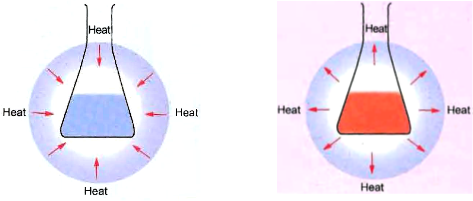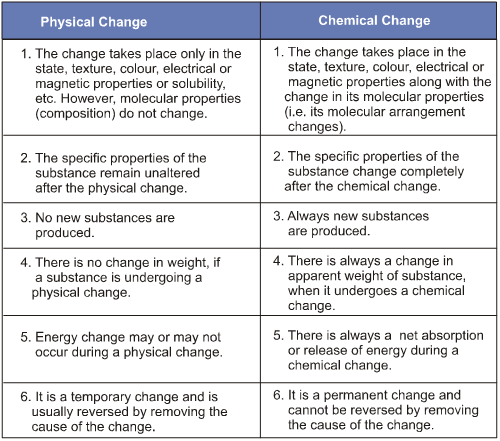- Books Name
- CBSE Class 7 Science Book
- Publication
- Param Publication
- Course
- CBSE Class 7
- Subject
- Science
Some Common Examples of Chemical Changes
• Burning of wood or charcoal • Burning of candle • Digestion of food • Curdling of milk
• Formation of biogas (Gobar gas) • Burning of petrol or diesel
• Drying of paint • Rusting of iron
• Ripening of fruit •Clotting of blood • Fading of the colour of a dyed cloth
• Baking of cake • Photosynthesis • Formation of wine • Butter turning rancid
• Electrolysis of water into hydrogen and oxygen • Formation of water from hydrogen and oxygen
Characteristics of chemical change
In addition to the formation of new substances, a chemical change may be accompanied by one or more of the following six changes :
(i) Evolution of gas
For example:
• When zinc granules are added to dilute sulphuric acid, hydrogen gas is evolved. If a burning matchstick is brought near the mouth of a test tube, it burns with a pop sound.
![]()
(ii) Change of colour
For example :
• When solid lead nitrate is heated, reddish-brown nitrogen dioxide gas is evolved. Also, a yellow-coloured lead monoxide is formed.

(iii) Formation of precipitate
Precipitate is a solid substance that deposits from a solution .
For example:
• When hydrogen sulphide gas is passed through blue coloured copper sulphate solution, black precipitate of copper sulphide is formed . .

(iv) Absorption or evolution of heat, light or any other radiation
For example :
• When carbon and sulphur are heated, i.e., heat energy is absorbed, then carbon sulphide is formed.
![]()
• When water is added to quicklime, heat energy is evolved.

Advance Learning
• Endothermic Reaction
The reaction in which heat energy is absorbed is called endothermic reaction.
• Exothermic Reaction
The reaction in which heat energy is evolved is called exothermic reaction.

(v) Sound may be produced
For example :
• when baking soda is added to vinegar, carbon dioxide gas is produced with a hissing sound.
![]()
(vi) Change of smelI may occur or a new smell may be given off
For example :
• When cooked food containing oils and fats is kept in the open (not refrigerated) for long, it gets spoiled and gives a foul smell.
Difference Between Physical and Chemical Changes

Corrosion
It is a gradual deterioration of metals on interaction with their environment as a result of chemical changes between them. Almost every metal is susceptible to degradation. Rusting of iron and tarnishing of silver are common examples of corrosion.
Corrosion decreases their intended usage period. The strength and appearance are also degraded.

 Param Publication
Param Publication
